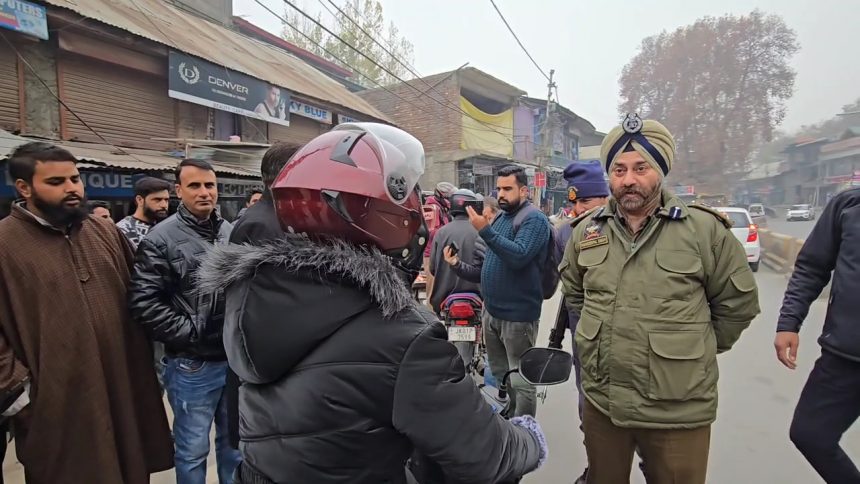Srinagar, Dec 30: In a bid to enhance road safety, the Srinagar Traffic Police issued over 4.11 lakh challans in 2024. This marks a notable increase compared to previous years, underscoring the department’s focus on enforcing traffic regulations and improving traffic flow across the city.
Throughout the year, the Traffic Police focused on tackling key offenses, including overspeeding, triple riding, red light violations, driving without helmets, unauthorized parking, seatbelt violations, and overloading.
According to the data, 1,10,035 challans were issued for helmet violations, while 1,08,515 were for unauthorized parking. Red light violations accounted for 41,576 challans, followed by 11,552 for overloading. Additionally, 26,213 challans were issued for seatbelt violations, and 11,110 for triple riding.
“Traffic Police Srinagar has been proactively addressing traffic violations, with over 4.11 lakh challans recorded in 2024,” said Muzaffar Shah, SSP Traffic Srinagar. He highlighted that while fines and vehicle seizures have increased, this is part of an ongoing strategy to promote road safety and reduce violations. Shah also noted a positive shift in public behavior following the tragic “Tengpora incident”.
The November 14th Tengpora accident, which claimed the lives of two teenagers and injured two others after their car crashed into a stationary truck and hit a divider, sparked calls for stricter measures against underage driving. Shah emphasized that, in the wake of the incident, parents have taken on greater responsibility in preventing reckless driving among minors, leading to a noticeable shift in public attitudes.
To strengthen enforcement further, the Srinagar Smart City Limited (SSCL) also introduced the Intelligent Traffic Management System (ITMS) and an e-Challan system earlier this month. Over 1,000 cameras were installed across the city to monitor various traffic violations, such as seatbelt and helmet non-compliance, mobile phone use while driving, and red light running. Owais Ahmad, CEO of Srinagar Smart City, explained that the ITMS minimizes human intervention, making enforcement more transparent and evidence-based.
“The system ensures real-time detection of violators, with e-challans automatically generated. This helps maintain transparency and reduces errors associated with manual interventions,” Ahmad added.
ITMS operational at 33 of Srinagar’s 66 junctions uses high-resolution cameras and radar sensors to monitor traffic at key intersections and highways. It collects real-time data and employs computer algorithms to identify traffic violations and patterns, enabling immediate action by authorities.
“The ITMS marks a new era in traffic regulation, allowing us to maintain constant surveillance of traffic flow and respond promptly to violators,” said Shah.
In addition to enforcement, the Traffic Police also launched public awareness campaigns to educate citizens about road safety, traffic regulations, and the importance of following traffic laws. These efforts were aimed at reducing violations and creating a more disciplined driving culture.
“Through these campaigns, we hope to reach a wider audience and make road safety a shared responsibility. Our goal is not only to penalize offenders but to instill a sense of accountability in every road user,” said Shah.
Looking ahead, the Traffic Police plans to further integrate technology and modern infrastructure to streamline traffic flow and strengthen enforcement in the coming year.










